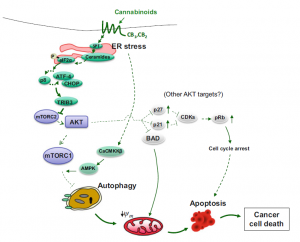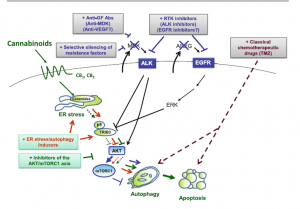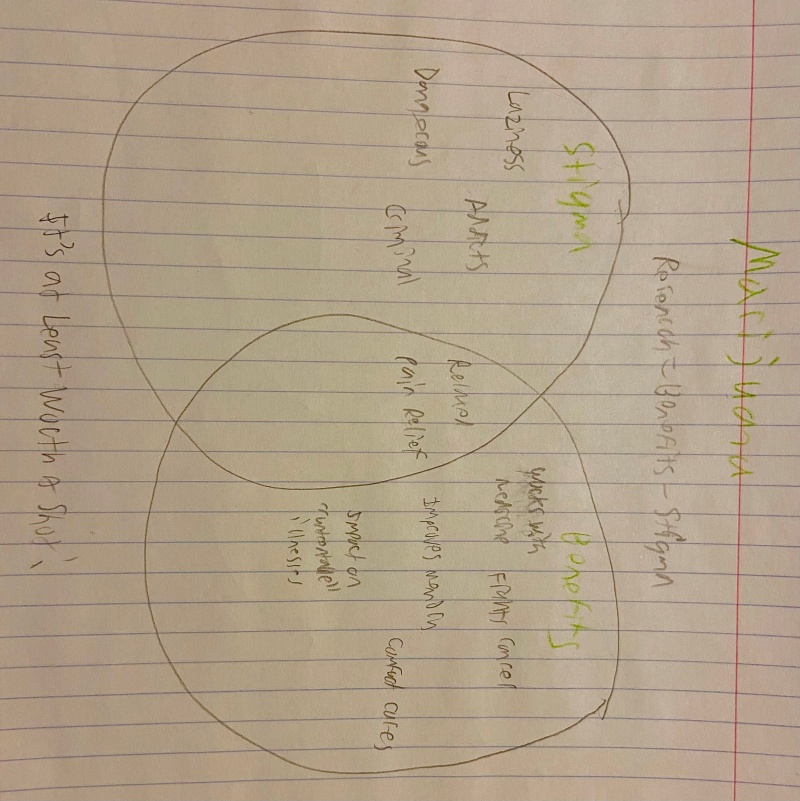Medical marijuana has been a hot debate topic for years now, but one of the undeniable and notable effects that has been seen is that medical marijuana has a good effect on people with terminal cancer. It is used to manage pain and symptoms effectively, but research has discovered that it can do so much more than that. Research has discovered that not only does cancer have palliative properties, it can also work to treat tumors.
How Marijuana and Other Endocannabinoid Activators Interact with Tumors:
Marijuana is part of a class of drugs called cannabinoids, which interact with the endocannabinoid system of our body. Marijuana, and more specifically THC have been studied for their medicinal purposes for years, but recently there have been breakthroughs in understanding how it interacts with cancer. When a patient with a glioma was exposed to THC, it was found that the tumor began to kill itself on the cellular level. This is because THC activated the CB1 and CB2 receptors that are naturally present in the body, and stimulated various aspects of the body that focus on autophagy, or consuming the cancerous cells. The diagram below paints a detailed picture of what goes on after THC activates the receptors, but in short THC enables the body to naturally kill off cancerous cells while also leaving healthy cells untouched. Through this signaling, THC and other cannabinoids can effectively treat cancer as well as providing relief from the major symptoms of cancer. There is also notable benefits of cannabinoids in other research, these include the ability to stop cancerous growth and even interfere with a tumor’s ability to resist traditional medicinal treatments. However, research has just begun to scratch the surface of the benefits and issues with cannabinoid treatments.

What Needs to Be Explored About Cannabinoids and Treatment?
While studying the cannabinoid’s ability to treat cancers, it was found that some cannabinoid resistant cancers existed, which led to a new challenge when facing said tumors. This resistance is related to a growth factor called growth factor midkine MDK, which activates something called the anaplastic lymphoma receptor tyrosine kinase (ALK). As shown in the diagram below, there is a way to counter this resistance by combining cannabinoids with classical cancer treatment methods such as chemotherapeutic drugs to get around this resistance. This research also opened the doors to combining classical cancer drugs with cannabinoids to enhance the power of both and to target difficult tumors. This being said, there is another major issue that is hindering all of this research, and that is the stigma surrounding marijuana. This combined with the fact that it is illegal in much of the US strongly prevents much of the additional research needed to get this treatment option into the hands of patients with cancer. There have been studies done with CBD and cancer, which is less stigmatized and works differently than a traditional cannabinoid, but the end results could still be removed by researching in conjunction with THC and the already known benefits it provides. In conclusion, THC and other cannabinoids have remarkable potential to treat cancer, but need to be given more research in order to best assess their usage and begin getting the treatment to the people that need it. The image source and more information about the topic can be found here
Featured image created by me

